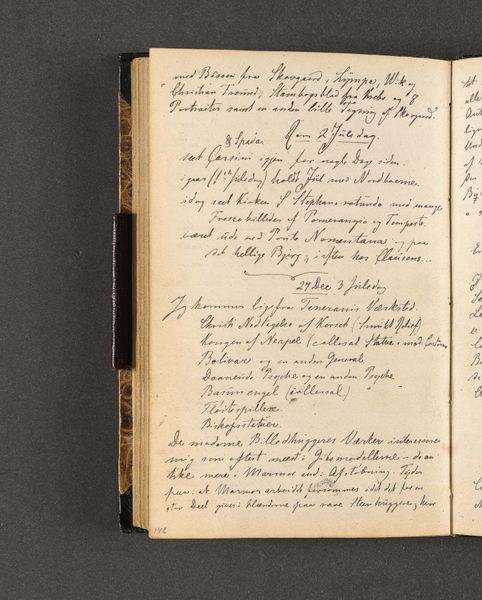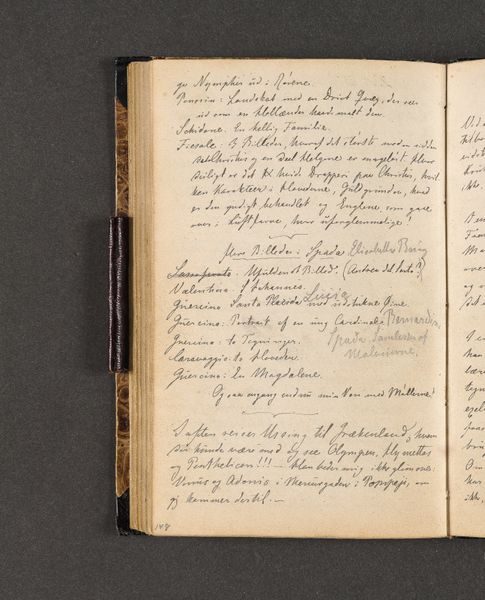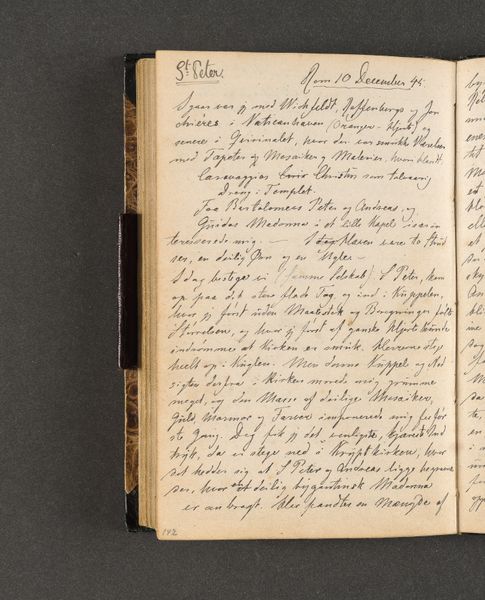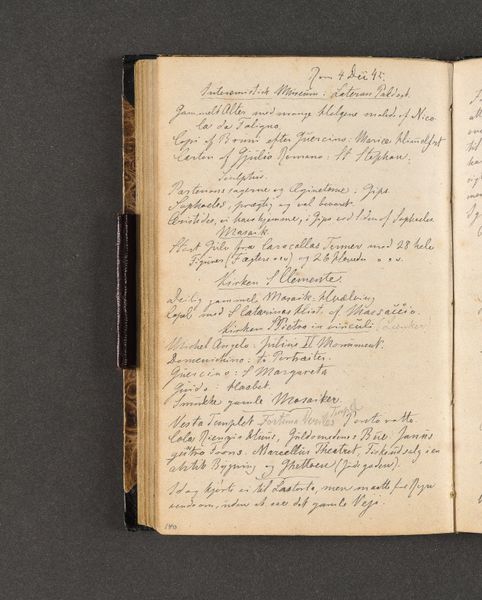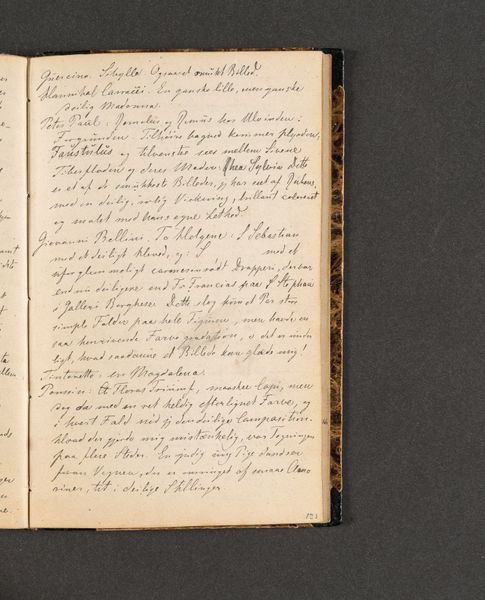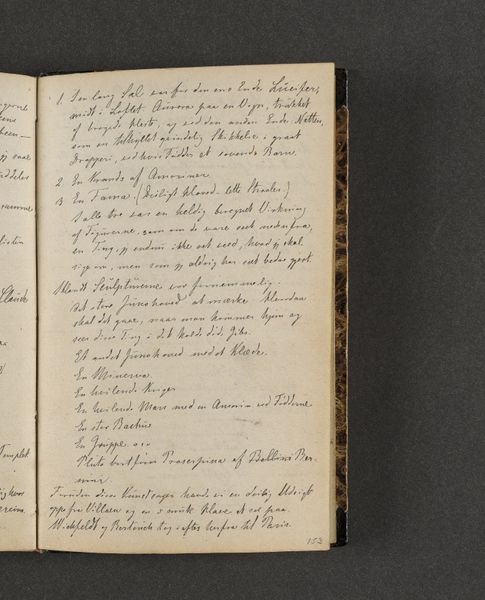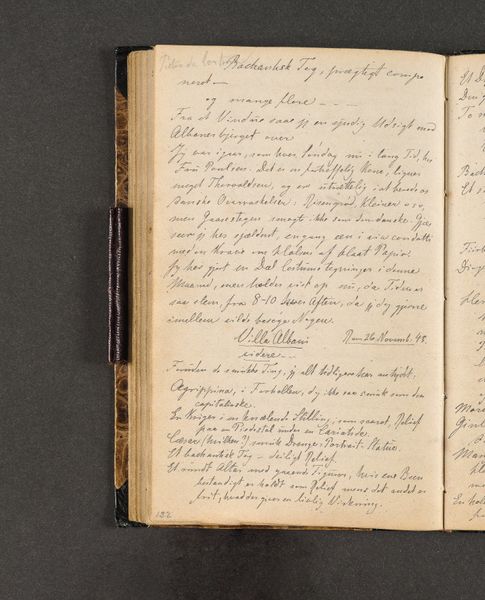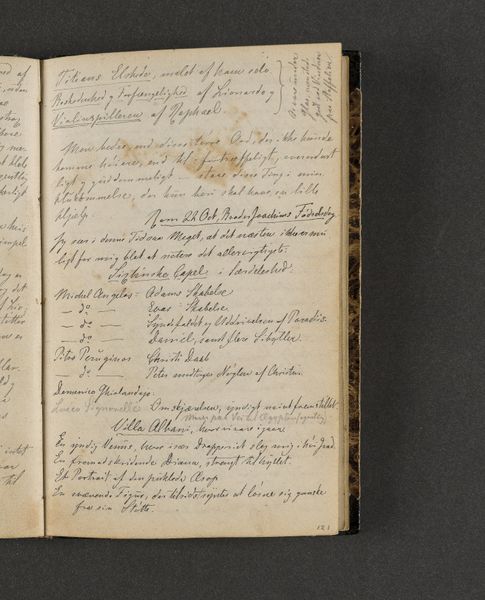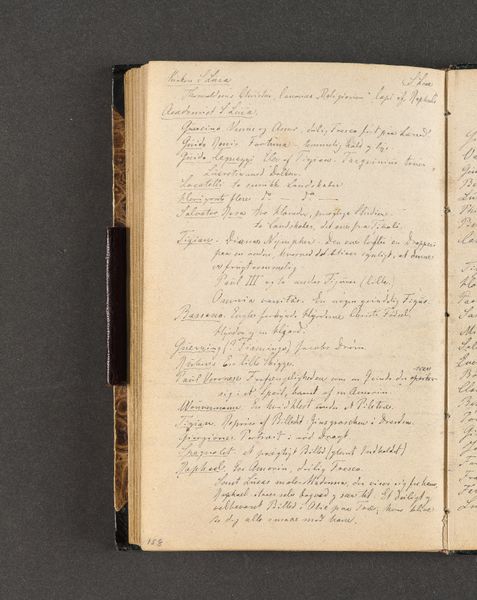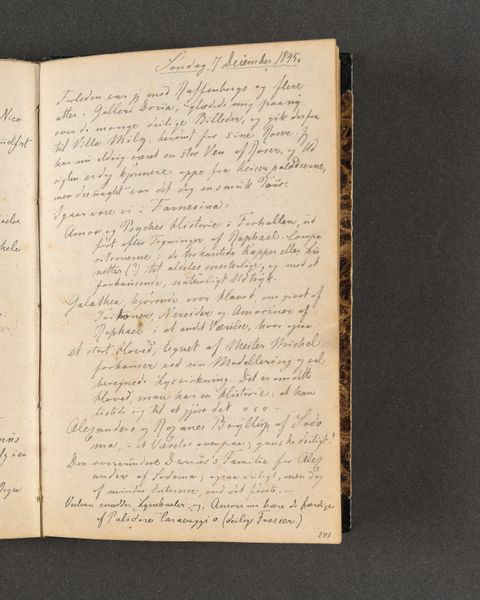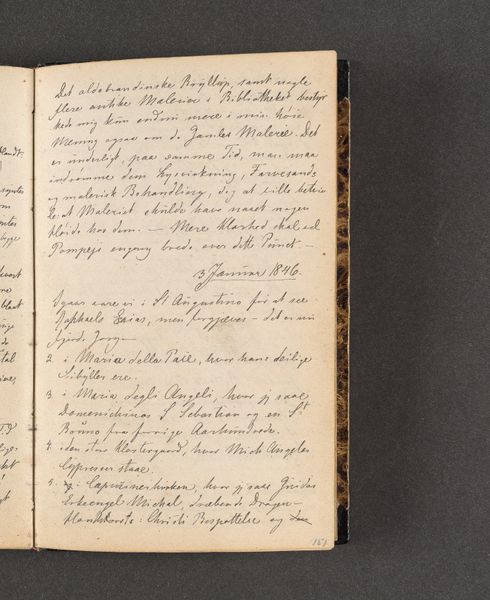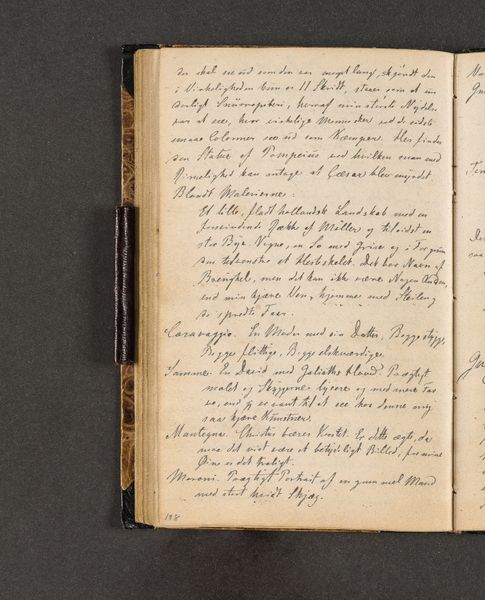
drawing
#
drawing
#
landscape
#
romanticism
#
academic-art
#
miniature
Dimensions: 161 mm (height) x 103 mm (width) x 11 mm (depth) (monteringsmaal)
Curator: This is a page from Johan Thomas Lundbye's "Rejsedagbog," or travel journal, created in 1845. Editor: Immediately, I'm struck by its intimacy—the dense script and aged paper. It feels incredibly personal, like a window into the artist’s mind as he experienced a particular moment. Curator: Lundbye was a central figure in Danish Romanticism, known for his landscape paintings. But here, within these pages, we see something different—raw observations, sketches perhaps, acting as annotations to his journey. He visited various locations on his travels. Editor: Look at the composition – dense, almost chaotic in its arrangement of text. What do you see in the structure, the lack of a traditional frame? Curator: Indeed, the composition feels informal. He is listing locations like the Barberini and artworks by Raphael and Bellini among others. These lists become spatial experiments that invite multiple readings. The layering implies the flurry of thought. He also wrote in dense lettering, with minimal editing and minimal spatial awareness on the page. Editor: This connects to the broader social and cultural history of travel. These were common aristocratic, European practices. The journal format allows him to be subjective and fragmented in ways that his finished paintings would never be. Curator: You are quite right. There’s an openness in this document; we see him processing information and impressions, not just recording a finalized view. Editor: It also raises questions about how artists consumed and documented visual material. We gain rare insight into their methodology. How did these notations impact his finished pieces? The very act of inscription transforms both memory and experience. Curator: I think the effect is of lived experience—more visceral than aesthetic. To revisit this artefact offers us a way to think about what artists' journals can show us today. Editor: Exactly. It challenges traditional art historical approaches that overemphasize finalized work. It is a glimpse behind the scenes, humanising the artistic practice and reminding us that even Romantic giants wrestled with daily recording.
Comments
No comments
Be the first to comment and join the conversation on the ultimate creative platform.
